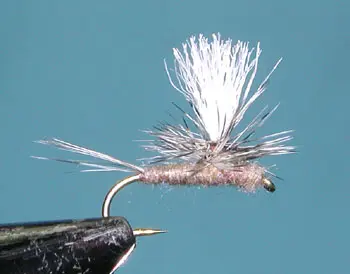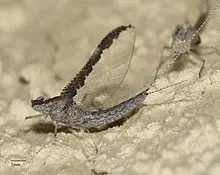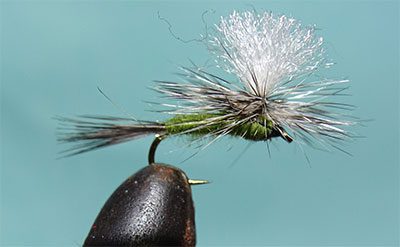Gulper Special – a good sight

Gulper Special
| Materials
to Order Material, click the link |
|
|---|---|
| Hook | TMC 100, #14-18 |
| Thread | Uni-thread Gray 8/0 |
| Body | Callibaetis Superfine |
| Thorax | Callibaetis Superfine |
| Tail | Grizzly Spade Hackle fibers |
| Wingpost | White Poly Yarn |
| Hackle | Grizzly |


Al Troth
Gulper Special
Al Troth of Dillon, Montana came up with theGulper Special in 1971 while fishing the callibaetis hatch on Hebgen Lake in southwest Montana. The term “Gulper” comes from the large rainbows and browns which would cruise the surface of the lake gulping down large quantities of tricos, callibaetis, and midges. The sound of the gulp would resonate across the lake. This pattern differs from earlier parachutes in that Al chose to use white or gray Poly Yarn for the wing post. This material has a number of advantages over calf tail or feather wings. It repels water so that the fly will float longer.
It can be used successfully for smaller mayflies, such as tricos and callibaetis, since the poly yarn provides less bulk to the fly. Since the material comes in different colors, Al also experimented with color choice so that light colors would be used against dark backdrops or dark colors would be used to improve the silhouette on flat water conditions. Al preferred to tie his Gulpers with a hackle that was one size smaller than the hook and tied his original pattern with dark brown Beaver dubbing. Today, most Gulper patterns use a tan dubbing color for the Callibaetis and an olive color for the Tricos in sizes 20-24.
Variations

Gulper Olive, Trico
| Hook | TMC 100, sizes 20-24 |
| Thread | Veevus 16/0 Brown |
| Body | Olive Brown Superfine |
| Thorax | Olive Brown Superfine |
| Tail | Medium Dun Spade Hackles |
| Wingpost | White Poly Yarn |
| Hackle | Grizzly |
